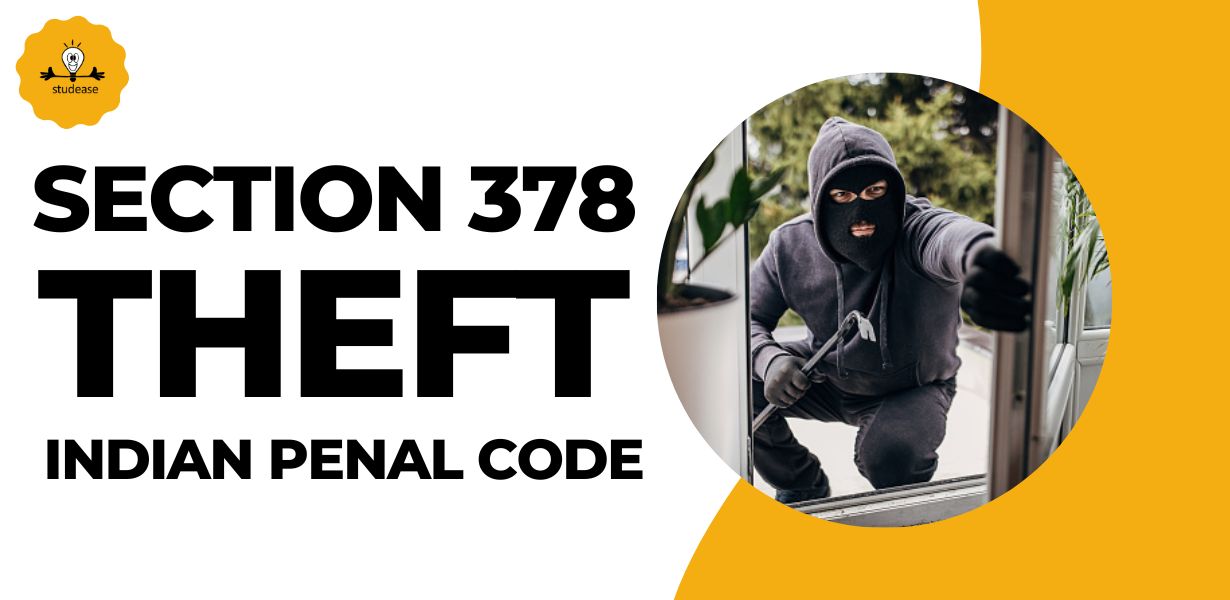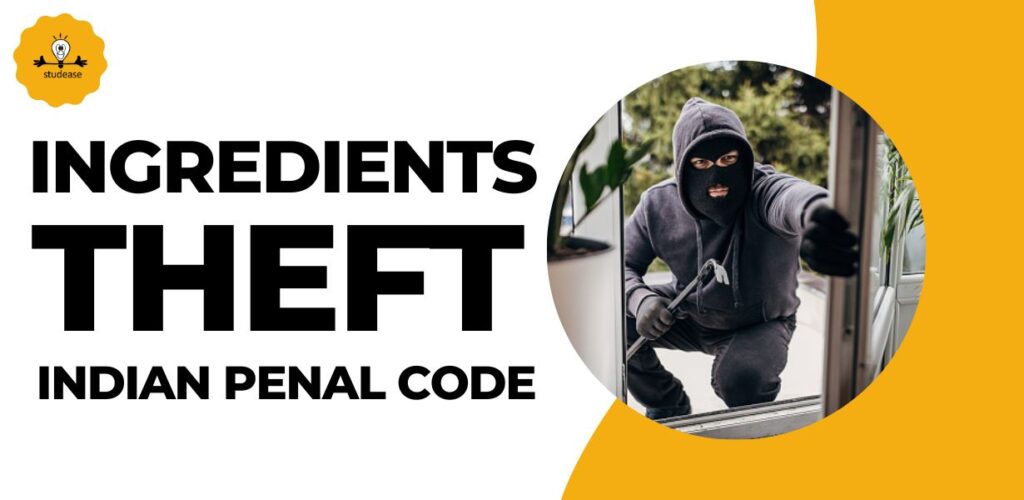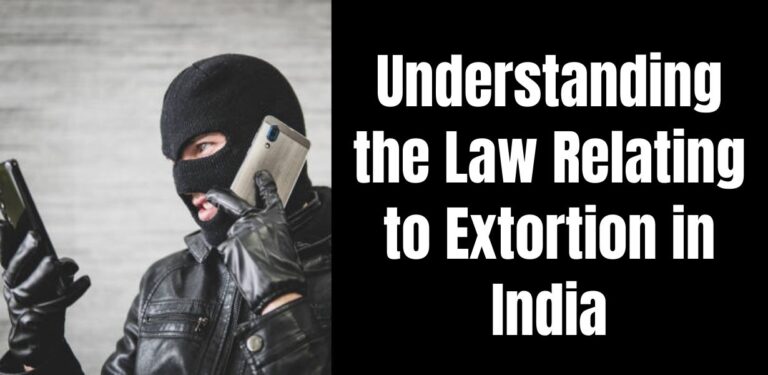Theft Indian Penal Code: Complete Details and Explanation

If you’re looking for comprehensive information on theft under the Indian Penal Code, you’ve come to the right place. The Indian Penal Code (IPC) is the official criminal code of India and covers all aspects of substantive criminal law. Theft is one of the offenses that the IPC deals with and it has been defined under Section 378 of the code.
Under the IPC, theft is an offense that involves taking away movable property without the consent. It is punishable under Section 379 of the IPC.
In order to prove theft, certain elements must be established, such as dishonest intention to take the property, taking the property out of the possession, and taking it without the owner’s consent.
Theft in Indian Penal Code
In this section, I will discuss the definition of theft, punishment for theft, punishment for attempt to commit theft, punishment for theft of human body etc., illustrations, and case laws related to theft.
Definition of Theft
As per Section 378 of the Indian Penal Code, theft is defined as the act of taking dishonestly any movable property out of the possession of any person without that person’s consent. The intention behind the act must be dishonest, and the property must be movable.
Punishment for Theft
The punishment for theft is imprisonment for up to three years or fine or both. If the theft is committed in a dwelling house, the punishment may extend up to seven years.
Theft of Human Body
The human body cannot be considered to be movable property and hence Section 378 cannot be
applied in case of theft of human body. But in case of instances where the body has been
preserved or the skeleton has been kept, then such property is covered by Section 378 and falls
under the definition of movable property
Theft of Crops
Theft of crops in India is a common problem faced by farmers, particularly in rural areas.
Crop theft is considered a criminal offense and is punishable under the Indian Penal Code. The penalties and sentencing for crop theft are usually determined based on the value of the crop that has been stolen.
Theft of Water
According to the definition of movable property in Section 22, water is considered movable property. Therefore, theft of water is punishable if someone reduces it into their possession.
However, taking water from the sea or river, which is not in the possession of anyone, would not be considered theft.
Theft of Electricity
According to section 22 of the Code, the dishonest abstraction of electricity does not amount to an offence since electricity running in electric wire is not considered movable property.
However, the Electricity Act has made theft of electricity an offence.
Theft of Gas
English Courts have recognized cooking gas as movable property, and therefore, theft of gas has been punished as larceny.
For instance, in the case of R. v. White, the accused introduced an additional pipe at the gas entry point to evade paying for the total gas consumed. This act was considered theft/larceny.
Illustrations
The Indian Penal Code provides illustrations to help understand the definition of theft. For example, if you take a book from someone’s table without their permission, it is considered theft. Similarly, if you take money from someone’s pocket without their permission, it is also considered theft.
(a) A cuts down a tree on Z’s ground, with the intention of dishonestly taking the tree out of Z’s
possession without Z’s consent. Here, as soon as A has severed the tree in order to such
taking, he has committed theft.
(b) A puts a bait for dogs in his pocket, and thus induces Z’s dog to follow it. Here, if A’s
intention be dishonestly to take the dog out of Z’s possession without Z’s consent. A has
committed theft as soon as Z’s dog has begun to follow A.
(c) A meets a bullock carrying a box of treasure. He drives the bullock in a certain direction, in
order that he may dishonestly take the treasure. As soon as the bullock begins to move, A has
committed theft of the treasure.
(d) A, being Z’s servant, and entrusted by Z with the care of Z’s plate, dishonestly runs away
with the plate, without Z’s consent. A has committed theft.
(e) Z, going on a journey, entrusts his plate to A, the keeper of the warehouse, till Z shall
return. A carries the plate to a goldsmith and sells it. Here the plate was not in Z’s possession.
It could not therefore be taken out of Z’s possession, and A has not committed theft, though
he may have committed criminal breach of trust.
Also Check: 10+ Best Books for Judiciary Exams Preparation
Theft Indian Penal Code Case Laws
Several case laws have been established to help interpret the law related to theft. For instance, in the case of State of Rajasthan v. Kishore, the court held that the prosecution must prove beyond reasonable doubt that the accused had the dishonest intention to commit theft. Few more Ladmarks:
- K. N. Mehra Vs The State Of Rajasthan on 11 February, 1957 is a case related to the theft of an aircraft. In this case, K. N. Mehra and his accomplice M.Z. Phillips were convicted under Section 379 of the Indian Penal Code for stealing an aircraft and were sentenced to imprisonment. The case is important as it established the distinction between theft and larceny and clarified the concept of temporary retention and implied consent in cases of theft. It also emphasized the importance of proving dishonest intention in cases of theft.
- In the case of Avtar Singh v. the State of Punjab, it was held that electricity cannot be considered as movable property and hence is not covered under the ambit of theft as provided in Section 378 of the Indian Penal Code, 1860. Even if there is a dishonest intention associated with the extraction of electricity, the same will be governed by the Indian Electricity Act, 1910 and not under the Indian Penal Code,1860.
- In Pyarelal Bhargava v. State of Rajasthan, it was held that the act of removing a file from a chief engineer’s office and providing it to a third person, even if it was only for a day, constitutes theft. This case established that the motive and displacement of the object are what matter, not the duration of time for which the object was taken.
- Another important judgment was made in the case of State of Andhra Pradesh v. K. Narayana in 1997. In this case, the Supreme Court held that the prosecution must prove that the accused had the intention to commit theft at the time of taking the property. This judgment clarified that the intention to steal must be present at the time of taking the property, not just at the time of entering the premises.

Essential Ingredients of Theft IPC
To prove the offence of theft under Section 378 of the Indian Penal Code, there are certain essential ingredients that must be present. These ingredients are:
- Dishonest intention: The first essential ingredient of theft is that the accused must have a dishonest intention to take away the property of another person. In other words, the accused must have the intention to deprive the owner of his property permanently.
- Movable property: The second essential ingredient of theft is that the property in question must be movable. Movable property refers to property that can be physically moved from one place to another.
- Possession of another person: The third essential ingredient of theft is that the property must be in the possession of another person. Possession means physical control over the property.
- Without consent: The fourth essential ingredient of theft is that the property must be taken away without the consent of the owner. If the owner gives his consent, then it will not amount to theft.
- Moving the property: The fifth essential ingredient of theft is that the accused must move the property in order to take it away. The movement of the property must be in furtherance of the intention to take it away.
It is important to note that all these ingredients must be present simultaneously to constitute the offence of theft. If any of these ingredients is absent, then the offence of theft cannot be proved.
In addition to these essential ingredients, there are certain other factors that may be taken into consideration while determining whether an act amounts to theft or not. These factors include the value of the property, the manner in which the property was taken, and the place where the property was taken from.
Also Read: Civil Judge Interview: Expert Tips and Strategies
Punishments for Other Theft Related Offences
In addition to theft, there are other theft-related offences that are punishable under the Indian Penal Code. Here are some examples of these offences and their corresponding punishments:
- Robbery: If theft is committed using force or fear, it is considered robbery. The punishment for robbery is imprisonment for up to 10 years, a fine, or both.
- Extortion: If force or threats is used to obtain property from someone, it is considered extortion. The punishment for extortion is imprisonment for up to 3 years, a fine, or both.
- Criminal Breach of Trust: If a person is entrusted with someone’s property and dishonestly misappropriate it, it is considered criminal breach of trust. The punishment for criminal breach of trust is imprisonment for up to 3 years, a fine, or both.
In conclusion, theft and other theft-related offences are serious criminal offences under the Indian Penal Code. If a person is found guilty of these offences, he could face significant punishments, including imprisonment and fines.
Grant of Bail
If a person is eligible for bail, the court may grant the bail on certain conditions.
The court may also impose other conditions as it deems fit, depending on the nature of the offense and the circumstances of the case.
It is important to note that the grant of bail is not automatic. The court will consider several factors before deciding whether to grant you bail or not. These factors may include:
- The nature and seriousness of the offense
- The evidence against the accused
- Criminal record of the accused
- The likelihood of the accused fleeing from justice
- The likelihood of the accused tampering with evidence or witnesses
- The likelihood of the accused committing further offenses
Powers to deal with
When it comes to dealing with theft as per the Indian Penal Code, there are certain powers that are vested with the authorities. Here are a few details on the same:
Arrest without a warrant
According to Section 41 of the Code of Criminal Procedure, any police officer can arrest a person without a warrant if they have reasonable suspicion that the person has committed theft or any other cognizable offence.
However, the officer must inform the person of the grounds of arrest and also produce them before a magistrate within 24 hours.
Search without a warrant
Under Section 165 of the Code of Criminal Procedure, a police officer can conduct a search without a warrant if they have reason to believe that stolen property is being kept at a certain place. However, the officer must record the reasons for the search and also prepare a list of the seized items.
Seizure of property
Under Section 102 of the Code of Criminal Procedure, a police officer can seize any property that is suspected to be stolen or that may be used as evidence in a theft case. However, the officer must prepare a list of the seized items and also inform the owner of the property of the seizure.
Investigation
The police have the power to investigate theft cases and gather evidence to prove the guilt of the accused. They can also question witnesses and collect statements from them.
However, the investigation must be conducted in a fair and impartial manner, and the accused must be given a chance to defend themselves.
Punishment of Theft Indian Penal Code
As per Section 379 of the Indian Penal Code, theft is punishable with imprisonment of up to three years, or with a fine, or both.
To sum up, the officials have powers to deal with theft cases in India. These powers must be exercised in a fair and just manner to ensure that justice is served.
Difference between Theft and Extortion
When it comes to criminal offenses, it is important to understand the differences between different types of crimes. In the Indian Penal Code, theft and extortion are two separate offenses, each with their own distinct elements and consequences.
Theft is an offense in which movable property of a person is taken away without their consent. On the other hand, extortion is an offense in which the offender wrongfully obtains consent by putting that person or any other person in the fear of injury.
Here are some key differences between the two offenses:
- Property: In theft, only movable property can be the subject of the offense. In extortion, both movable and immovable property may be involved.
- Consent: In theft, the property is taken without the persons consent. In extortion, the consent is wrongfully obtained through fear or intimidation.
- Effect: In extortion, the property is delivered to the offender. In theft, the property is dishonestly taken away.
Here is a chart summarizing the differences between theft and extortion:
| Theft | Extortion | |
|---|---|---|
| Property | Only movable property | Both movable and immovable property |
| Consent | Property taken without consent | Consent obtained through fear or intimidation |
| Effect | Property is dishonestly taken away | Property is delivered to the offender |
It is also important to note that extortion can be considered robbery if there is an imminent threat of violence or harm.
Also Read: Haryana Judiciary Exam Preparation Guide
Summary
In addition to theft, the IPC also has provisions for other offences against property, such as robbery, dacoity, and extortion. These offences are defined under Sections 390-402 of the IPC.
It is important to note that the IPC is a comprehensive code intended to cover all substantive aspects of criminal law in India. The code was drafted on the recommendations of the first law commission of India established in 1834 under the Charter Act of 1833.






